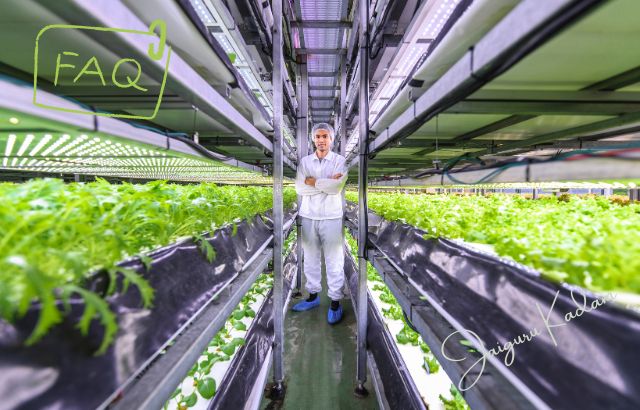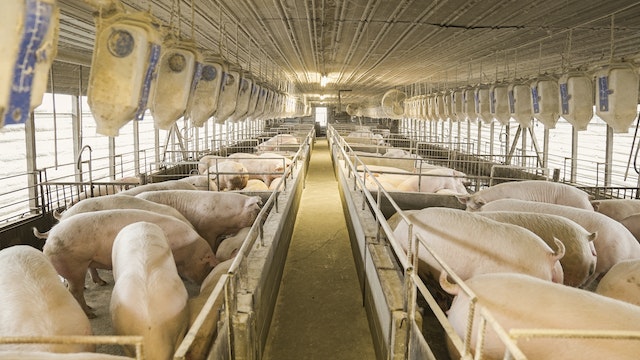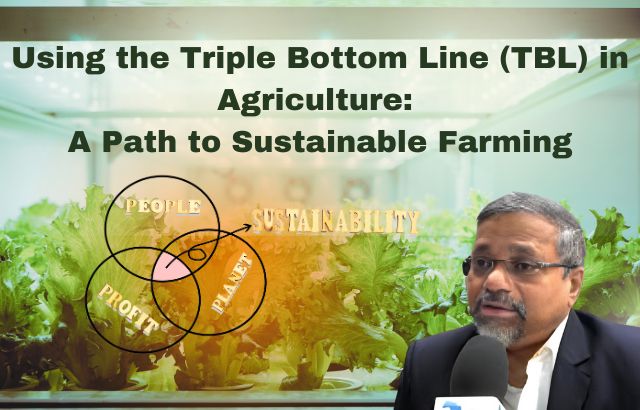In the pursuit of sustainability and environmental preservation, many innovators are turning to an unlikely source for inspiration—nature. Biomimicry, the practice of imitating nature’s strategies to solve human challenges, is gaining momentum across various industries. By observing natural systems and processes that have evolved over millions of years, green innovators are finding sustainable and efficient ways to address modern problems, particularly in agriculture. Let’s explore how biomimicry is shaping green innovations, focusing on green solvents, surfactants, herbicides, and herbicide safeners, and the contributions of innovators like Jaiguru Kadam.
What is Biomimicry?

Biomimicry is the science of designing products, systems, and processes by studying and emulating the strategies found in nature. Nature’s ability to create efficient, resilient, and sustainable solutions has inspired a wide range of technological advances. For instance, the way a spider creates its silk or how birds fly in formation can inspire more energy-efficient technologies.
In the agricultural field, this approach has resulted in a variety of solutions that help reduce dependency on harmful chemicals and enhance sustainability. By replicating nature’s solutions, green innovators reduce environmental impact, promote biodiversity, and support healthier ecosystems.
Key Examples of Green Innovation Inspired by Biomimicry

- Green Solvents: Green solvents are a sustainable alternative to traditional toxic solvents used in agriculture and industry. These solvents are derived from natural sources such as plants or microorganisms, and they decompose safely in the environment.
- Example: Researchers are developing plant-based solvents inspired by the way plants use essential oils. Citrus oils, for instance, have been found to be highly effective in dissolving certain compounds, and their use as green solvents can replace more harmful chemicals commonly found in pesticides and cleaning agents.
- Green Surfactants/Adjuvants: Surfactants are chemicals that reduce the surface tension of liquids, improving the effectiveness of herbicides and pesticides. Traditionally, these surfactants have been derived from petrochemicals, but a shift towards green surfactants is underway.
- Example: Surfactants inspired by the natural properties of plant cell membranes are being used to improve the performance of agricultural sprays. These green surfactants not only reduce toxicity but also enhance the efficiency of pesticide application, reducing the overall quantity of chemicals needed.
- Plant-Derived Herbicides/Green Herbicides/Bioherbicides: One of the most impactful innovations in agriculture comes in the form of plant-derived herbicides. These bio-based herbicides mimic the natural defense mechanisms of plants and target unwanted weeds without harming the environment or beneficial organisms.
- Example: Allelopathy, a natural phenomenon where plants release chemicals to inhibit the growth of other plants, has been mimicked in the development of plant-derived herbicides. For instance, compounds found in Eucalyptus or Black Walnut trees have been found to be effective against certain weeds, providing a natural alternative to synthetic herbicides.
- Green Herbicide Safeners: Herbicide safeners are chemicals that protect crops from the toxic effects of herbicides, enabling selective weed control without damaging crops. Green herbicide safeners are inspired by how certain plants have evolved to withstand the toxic effects of their own chemical defenses.
- Example: Certain plant species have developed natural mechanisms to detoxify herbicides. Mimicking this resilience, green herbicide safeners are being designed to protect crops while ensuring the safety of the environment.
Role of Green Innovators: Jaiguru Kadam’s Contributions

Jaiguru Kadam, a prominent agricultural green innovator, has been at the forefront of developing sustainable agricultural practices using biomimicry. His work involves leveraging nature’s time-tested processes to create more efficient, environmentally friendly agricultural practices. One of his key contributions is in the development of bioherbicides and plant-derived herbicides, which mimic the natural growth inhibition mechanisms found in plants.
His innovative approach also emphasizes the reduction of chemical dependency, moving towards organic and eco-friendly practices. Kadam’s work showcases the power of biomimicry in addressing the agricultural industry’s challenges, like weed resistance, environmental degradation, and the harmful effects of chemical herbicides.
Intriguing Statistics
- Reduction in Herbicide Use:
- Studies show that bioherbicides have the potential to reduce herbicide use by up to 50% in certain agricultural settings, reducing the environmental footprint significantly.
- Market Growth of Green Surfactants:
- The global market for green surfactants is expected to grow at a compound annual growth rate (CAGR) of 5.6% from 2021 to 2028, driven by increasing environmental awareness and regulatory pressure on chemical surfactants.
- Biodegradable Herbicides:
- The global market for bioherbicides is projected to reach USD 4.72 billion by 2025, growing at a CAGR of 15.4%, due to a rising demand for sustainable weed management solutions.
FAQs: Nature-Inspired Green Innovation

Q1: What is biomimicry in green innovation? A: Biomimicry in green innovation involves using nature as a model to create sustainable, efficient solutions that address human challenges. This can include anything from plant-based chemicals to systems that mimic natural ecosystems.
Q2: How do green surfactants benefit agriculture? A: Green surfactants improve the efficacy of agricultural sprays, such as herbicides and pesticides, while reducing the toxicity and environmental impact. They are derived from renewable resources like plants and microorganisms.
Q3: What is the difference between bioherbicides and traditional herbicides? A: Bioherbicides are made from natural substances found in plants or microorganisms, targeting specific weeds without harming the broader ecosystem. Traditional herbicides, on the other hand, are often synthetic and can have harmful side effects on the environment and non-target species.
Q4: Why are plant-derived herbicides better for the environment? A: Plant-derived herbicides are biodegradable, reducing long-term soil and water contamination. They also tend to be more selective, targeting only specific weeds while leaving beneficial plants and animals unharmed.
Q5: Can green herbicide safeners be used in organic farming? A: Yes, many green herbicide safeners are derived from natural sources and are compatible with organic farming practices. They help protect crops from herbicide damage while ensuring minimal environmental impact.
Examples and Products Inspired by Biomimicry

- Green Solvents from Citrus Oils:
- Inspiration: The natural solvent properties of citrus fruits, particularly lemon and orange peels, have been mimicked for green solvents.
- Product Example: Citrus-based solvents are used in cleaning agents, pesticides, and agricultural formulations, providing an eco-friendly alternative to petroleum-based solvents.
- Lotus-Effect Surfaces:
- Inspiration: The self-cleaning properties of the lotus leaf, which repels water and dirt through microscopic surface structures.
- Product Example: Lotus-effect coatings are applied to windows, solar panels, and textiles to reduce the need for cleaning and improve longevity, inspired by the lotus leaf’s natural water-repellent properties.
- Gecko-Inspired Adhesives:
- Inspiration: The gecko’s feet are capable of adhering to surfaces without the use of any glue, using micro-structures that create van der Waals forces.
- Product Example: Gecko-inspired adhesives are used in medical bandages, electronics, and reusable tapes, offering strong adhesion without leaving residue.
- Whale Fin-Inspired Wind Turbines:
- Inspiration: The shape of humpback whale fins, which have tubercles (bumps) that allow for more efficient movement through the water.
- Product Example: Whale-inspired wind turbine blades have tubercle-like designs that increase efficiency by improving aerodynamics and reducing drag, leading to more energy production.
- Spider Silk-Based Materials:
- Inspiration: Spider silk is incredibly strong and light, and researchers are developing synthetic versions of it.
- Product Example: Spider silk-inspired fibers are used in medical sutures, lightweight clothing, and body armor due to their strength and flexibility.
- Termite Mound-Inspired Cooling Systems:
- Inspiration: Termites build mounds that maintain a constant temperature despite external fluctuations, using natural ventilation systems.
- Product Example: Biomimetic cooling systems based on termite mound structures have been applied to buildings for energy-efficient climate control, reducing the need for air conditioning.
- Bee-Inspired Pollination Robots:
- Inspiration: The way bees pollinate flowers, transferring pollen efficiently through flight patterns and movement.
- Product Example: Bee-inspired robots are being developed for agricultural use to assist with pollination in areas affected by the decline in bee populations.
- Shark Skin-Inspired Surface Textures:
- Inspiration: The texture of shark skin, which is covered with microscopic scales that reduce drag and inhibit the growth of bacteria.
- Product Example: Sharkskin-inspired surfaces are used in swimming gear, medical devices, and boat hulls to reduce friction and improve efficiency, while also preventing bacterial growth.
- Tree Root-Inspired Water Filtration Systems:
- Inspiration: The way tree roots naturally filter and absorb water, utilizing a complex system of capillaries.
- Product Example: Biomimetic water filtration systems replicate tree root structures to remove contaminants from water, providing a natural and efficient method for purifying water.
- Bird Wing-Inspired Drones:
- Inspiration: The aerodynamic structure of bird wings, which help optimize flight and maneuverability.
- Product Example: Bird wing-inspired drones mimic the design of birds’ wings to improve the flight capabilities of unmanned aerial vehicles (UAVs), leading to more efficient drones for agriculture, surveillance, and delivery services.
These products and solutions demonstrate how nature’s designs can be replicated for innovative, sustainable, and more efficient technologies across various industries, particularly in agriculture and environmental protection.
Conclusion
Biomimicry offers an exciting future for sustainable agriculture, driving innovations that not only increase efficiency but also promote environmental responsibility. From green solvents to bioherbicides and surfactants, the shift toward nature-inspired solutions is transforming how we approach farming. Innovators like Jaiguru Kadam are leading the charge, demonstrating how nature’s processes can guide us toward a more sustainable, resilient agricultural future.
By embracing biomimicry, we can solve modern challenges while working in harmony with the environment—just as nature has done for millennia.











